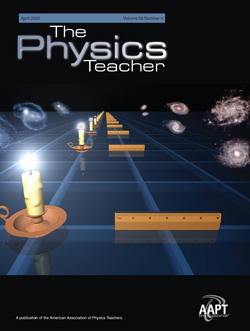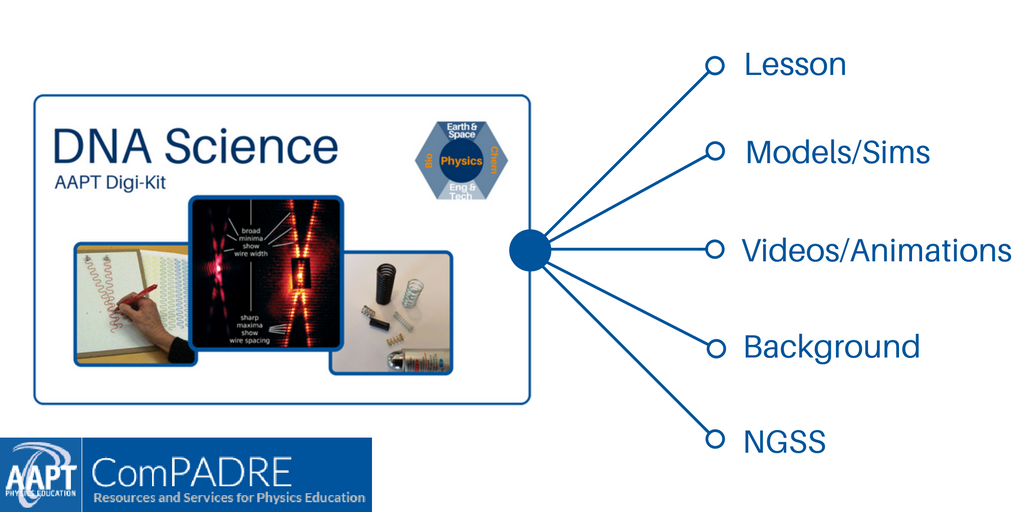The Physics Teacher
Volume 58 Issue 4, April 2020
Is Modern Cosmology in Crisis?
This month's cover contrasts two ways to measure the expansion of the universe. On the left, the standard candle flames appear dimmer and redder in the distance, similar to the received light from Type Ia supernovae whose intrinsic brightness is well determined. On the right, the separations between the ruler markings appear closer together in the distance, similar to the apparent separation distance of pairs of galaxies today. When these two basic ideas are used to measure the Hubble constant, recent results seem to be in conflict. (Image credit, NASA).
Columns
And the Survey Says..., Figuring Physics, iPhysicsLabs Little Gems, Physics Challenge for Teachers and Students, Fermi Questions, Talkin' Physics, Technology In The Classroom, Visual Physics, and Websights.
Papers
Fluid Mechanics Education Using Japanese Anime: Examples from “Castle in the Sky” by Hayao Miyazakiby Sangjin Ryu, Haipeng Zhang, Markeya Peteranetz and Tareq Daher. DOI: 10.1119/1.5145464
Is Modern Cosmology in Crisis? by Don Lincoln. DOI: 10.1119/1.5145465
Greenhouse Gas Footprints for Physicists by P.-M. Binder, Kelsey D. Foreman-Bunting, Zoë A. Whitney, Allison M. Leach, Elizabeth S. Dukes and James N. Galloway. DOI: 10.1119/1.5145466
Collision of a Ball with a Stationary Oscillator by Vladimir Ivchenko. DOI: 10.1119/1.5145467
A Hair-Raising Demonstration by Thomas B. Greenslade Jr. DOI: 10.1119/1.5145468
To Study or to Sleep: How Seeing the Effect of Sleep Deprivation Changed Students’ Choices by Vincent P. Coletta. DOI: 10.1119/1.5145469
Computational Thinking in Introductory Physics by C. M. Orban and R. M. Teeling-Smith. DOI: 10.1119/1.5145470
Computational Essays in the Physics Classroom by Tor Ole B. Odden and John Burk. DOI: 10.1119/1.5145471
Driven Series RLC Circuit and Resonance: A Graphic Approach to Energy by Fabiana Botelho Kneubil. DOI: /10.1119/1.5145472
The Effect of a Tangential Frictional Force on Rotating Disks: An Experimental Approach by Mário S. M. N. F. Gomes, Pedro Pereira da Silva, Manuela Ramos Silva and Pablo Martín-Ramos. DOI: 10.1119/1.5145473
Visualizing Properties of a Quadratic Function Using Torricelli’s Fountain by Milena D. Davidović, Tatjana Marković-Topalović, Josip Sliško and Mirjana Božićv. DOI: 10.1119/1.5145475
An Undergraduate Demonstration of Gravitational Time Dilation by Brian Patterson, Mario Serna, M. Alina Gearba, Robert Olesen, Patrick O’Shea, Jonathan Schiller, David Emanuel, Jerry F. Sell, M. Shane Burns, Michael D. Leveille, Armand R. Dominguez, Brian B. Gebhard, Samuel E. Huestis and Jeffrey Steele. DOI: 10.1119/1.5145476
A Thin Film Interference Laboratory Experiment for Introductory Physics by Dereth J. Drake, Christiana G. Epperson and Savanna L. Burks. DOI: 10.1119/1.5145477
Race and Physics Teaching Collection Resource
DNA Science Lesson & Digi-Kit
Inspired by an article from The Physics Teacher, this multidisciplinary lesson and digital resource collection is based on How Rosalind Franklin Discovered the Helical Structure of DNA: Experiments in Diffraction (Braun, Tierney, & Schmitzer, 2011). Click the image to access this resource.



